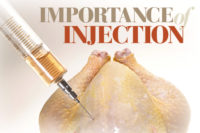The importance of a diverse supply chain

As noted in this recent article, economic factors are impacting the shopping habits of consumers. There are many factors that go into these price increases; there is no simple thing or person you can point to and say, “It’s their fault!”
One thing from the past few years that has stuck with me was an interview I had with Will Harris of White Oak Pastures in 2020. We discussed the current state of the supply chain, which at the time had been rocked by the COVID-19 pandemic.
“I think the linear growth in scale that brought about incredible efficiencies cost the industry a fortune in resilience,” he said. “I think that efficiency and resilience are almost the antithesis of each other. The more you get one, the more you give up the other. Meat and poultry companies got bigger and bigger and more and more efficient until they weren’t resilient anymore.”
We have seen in “normal” times that something like a fire at one of the major packing plants can have a dramatic effect on meat prices, and it takes months to even out. These last few years have seen a series of cascading effects – pandemic, labor shortage, increased gas prices – that have affected every aspect of the singular supply chain. While there is no quick fix to any of those issues, there is the possibility of creating an alternate supply chain, a local supply chain that’s not beholden to transporting products hundreds or thousands of miles.
The next cover story for Independent Processor will talk about a supply chain that is just a couple hours between the farm, the packer and the retailer. Other supply chains can be in the same county, or even the same farm. Economic factors will undoubtedly cause prices of those meat products to increase as well, but the closeness of the supply chain can help to blunt some of the costs. The USDA is working to grow these smaller supply chains and make them viable. The consumer demand is there, so these efforts can make everybody involved in the supply chain a winner.
Sam Gazdziak
gazdziaks@bnpmedia.com
Looking for a reprint of this article?
From high-res PDFs to custom plaques, order your copy today!








